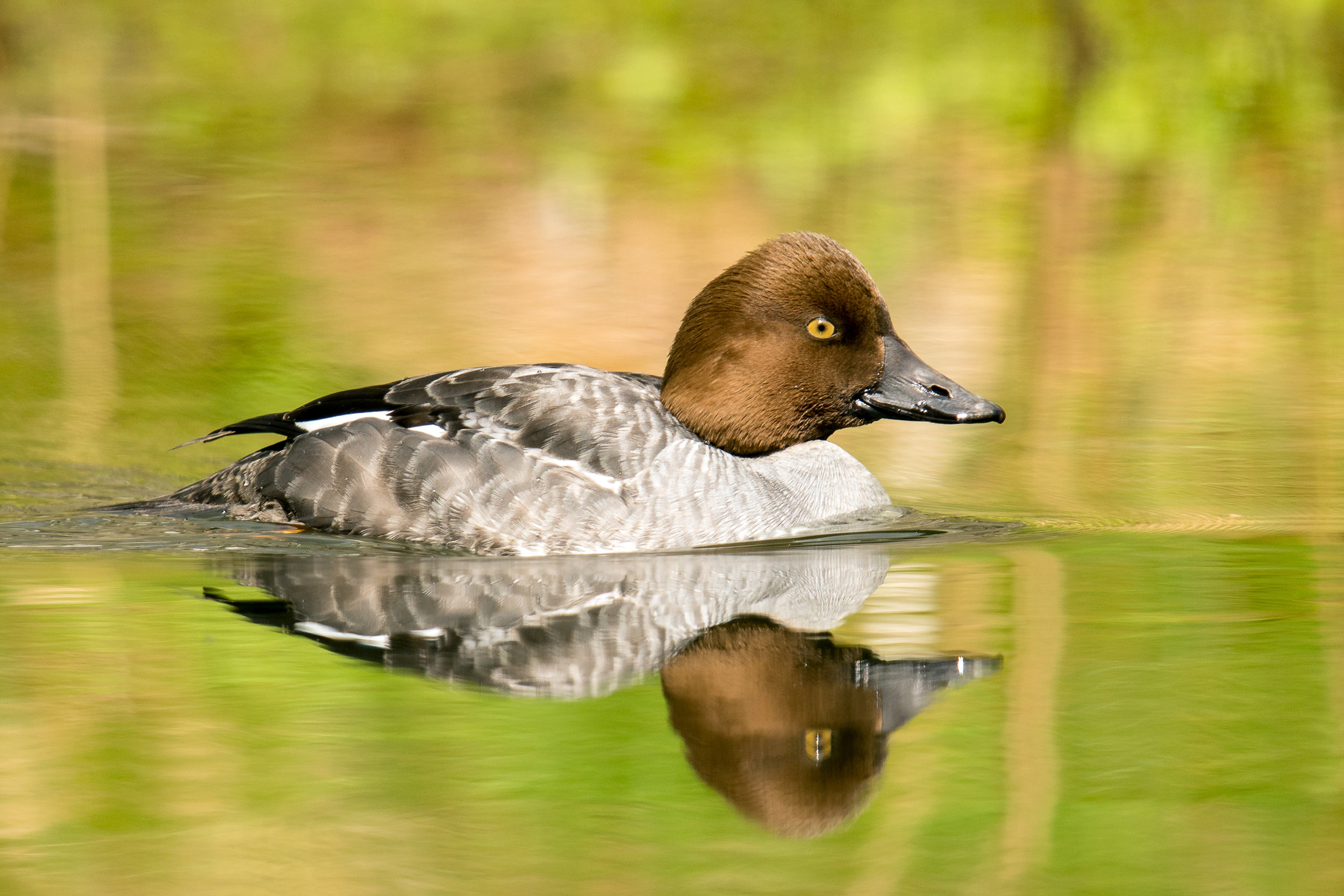Common Goldeneye
By Andy McCormick
PC: Mick Thompson (Common Goldeneye)
Scientific Name: Bucephala clangula
Length 18.5 in
Wingspan 26 in
Weight: 1.9 lb
AOU Band code COGO
Common Goldeneyes are very fast fliers. They have been clocked at speeds over 30 mph (Eadie et al). The “Whistler” as it is commonly known, has wing beats so rapid they make a metallic whistling sound during flight. Frank Chapman (1939) called it “wing music.” The species name clangula is from the Latin clangor, meaning noise. The bird shares the genus bucephala, “bull headed” from the Greek bous, bull, and kephale, head, with the Barrow’s Goldeneye and Bufflehead. The heads of these three ducks were thought to resemble the head of the American buffalo from which the Bufflehead gets its name (Holloway). Goldeneye refers to the bird’s bright yellow iris.
The Common Goldeneye has a round white spot at the base of the bill, where the Barrow’s has a crescent-shaped spot. The Common has much more white in the secondary flight feathers and on the water looks very white along the side. The Barrow’s wing is mostly black with white spots. In flight the Common has large white wing patches on the secondaries. The head of the Common is much more pointed than that of the Barrow’s. The female is gray with a dark brown head and a short, yellow-tipped bill.
Common Goldeneyes are diving ducks and prefer clear water. They visit Washington in winter beginning in October and head back to Alaska and Canada in March and April. Pair bonds are formed in the wintering areas and as spring arrives the bird’s animated courtship behavior is on display. The spirited dance on the water includes lots of head-up, head swings, and wing and leg stretching. The “head throw” of the male is the most spectacular move as he arches his head all the way back toward his rump with his bill in the air. Then he thrusts his head straight up and vocalizes while kicking water out with his feet.
The birds nest in cavities of either conifer or deciduous trees in the northern boreal forest. In a pinch the northern-most birds may use rock cavities. A clutch of 7-10 olive-green or blue-green eggs are laid in the nest which is formed from wood chips covered with down. At times two females may share a nest depositing up to 30 eggs (Harrison). Incubation lasts about a month and the young leave the nest about a day or two after hatching. They can fly in about two months.
Common Goldeneye populations are stable. They have done well where nest boxes are provided and on acidic lakes where there are few fish, which are their main competitor for invertebrates. This is an ironic result of the otherwise negative effects of acid rain. Goldeneyes are thought to be an important bioindicator species to monitor the environmental changes in the boreal lakes, a poorly understood and under-researched region (Eadie, et al).


